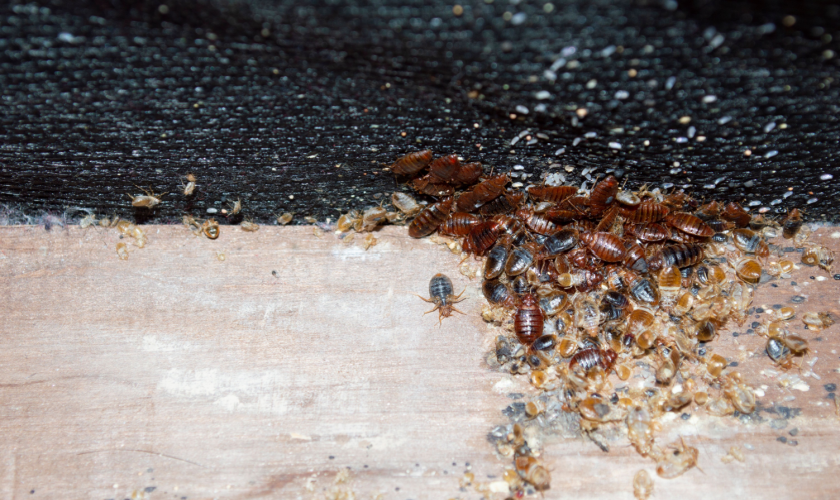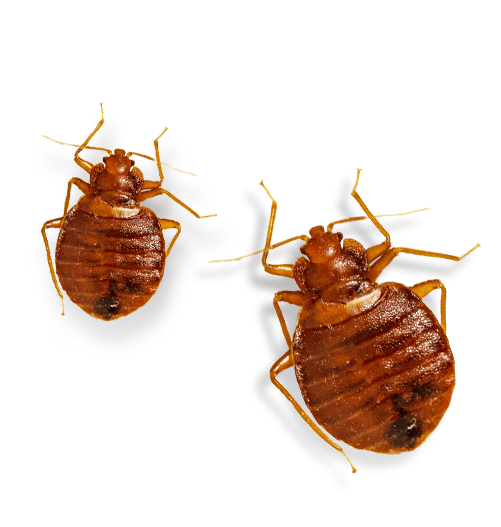Qualified Bed Bug Exterminator Near Me: DC Heat Treatment Specialists
Wiki Article
Checking Out the Science Behind Bed Pest Warm Treatments as a Lasting Bug Management Technique
In the world of pest monitoring, the mission for sustainable and effective options continues to be a continuous quest. One such approach that has gotten grip in the last few years is the use of warmth treatments to battle bed pest infestations. By using the scientific research behind thermal fatality factors for these persistent bugs, heat treatments provide an encouraging choice to typical chemical-based strategies. The details of just how heat effectively gets rid of bed pests and the broader ramifications for lasting parasite management practices make this a subject worth discovering further.Bed Pest Heat Therapy Refine

Thermal Death Factor for Bed Pests
Exposing bed pests to elevated temperatures beyond their thermal resistance variety is critical for accomplishing effective elimination in warm therapy procedures. The thermal death factor for bed bugs describes the temperature at which these insects can not survive. Research study indicates that bed insects begin to perish when subjected to temperature levels above 113 ° F(45 ° C) for a continual duration. As the temperature boosts, so does the mortality rate of bed pests. At around 118 ° F(48 ° C ), bed bugs begin to die quickly, with a death price of nearly 99% within mins of direct exposure. This demonstrates the sensitivity of bed insects to heats and highlights the efficiency of warmth treatments in removing problems. By getting to and maintaining temperature levels over the thermal fatality point for bed bugs, bug monitoring professionals can guarantee comprehensive elimination of bed pest populations, consisting of hard-to-reach locations where chemical treatments might be less effective. Recognizing the thermal death factor for bed bugs is vital for implementing successful warm therapy approaches and attaining lasting bug monitoring end results.Advantages of Warmth Treatments
Having established the critical thermal fatality point for bed insects, it is crucial to now explore the significant advantages that warm therapies use in properly eliminating these resistant insects. One of the primary benefits is that warmth can penetrate deep right into crevices and cracks where bed insects conceal, making sure that even the most hard-to-reach areas are heated to lethal temperatures.Furthermore, heat treatments are non-toxic and eco-friendly, making them a sustainable bug monitoring technique. Unlike chemical pesticides, warm treatments do not leave harmful deposits that can pose risks to human health or the atmosphere. This aspect is particularly crucial in delicate settings such as health centers, schools, and residential locations where chemical usage may not be preferable.
In addition, warmth therapies have Click Here a high success rate in removing bed bug problems in a single treatment, reducing the need for several sees and lessening disruption to passengers. This effectiveness not only saves money and time yet likewise offers satisfaction to those taking care of bed bug troubles.
Effectiveness of Warmth Therapy

Warmth therapies have actually the included benefit of killing bed insect eggs, which are commonly immune to traditional chemical treatments. On the whole, the effectiveness of heat therapies in eradicating bed insect infestations makes them a reputable and lasting insect management technique.
Lasting Insect Administration Conveniences
Carrying out sustainable bug monitoring techniques offers long-lasting advantages for both the atmosphere and public health and wellness. By making use of techniques such as heat treatments for parasite control, we can reduce the reliance on dangerous chemical pesticides that can have negative effects on communities and human wellness - exterminator. Lasting parasite management strategies aid in preserving biodiversity by targeting certain see it here insects without damaging non-target microorganisms, therefore keeping a balanced community
Moreover, sustainable pest monitoring practices contribute to the general wellness and wellness of the public. By lessening direct exposure to hazardous chemicals made use of in standard parasite control approaches, warmth therapies provide a much safer alternative for insect management in domestic, commercial, and public spaces. This decrease in chemical usage additionally assists in avoiding chemical residues from infecting water, soil, and air, guarding ecological top quality.
Verdict
In conclusion, bed pest heat treatments have been shown to be a effective and lasting insect administration technique. The thermal death point for bed pests makes them vulnerable to warmth therapies, which have various advantages over traditional chemical treatments. The effectiveness of heat treatments in removing bed bug invasions while decreasing ecological influence highlights the possibility of this approach as a sustainable option for parasite control.The bed pest heat therapy process includes elevating the temperature level within plagued areas to a level that efficiently eliminates bed pests and their eggs. By reaching and maintaining temperature levels above the thermal death factor for bed insects, insect management specialists can make certain detailed elimination of bed bug populations, consisting of hard-to-reach areas where chemical therapies may be much less effective. One of the main advantages is that warm can permeate deep into fractures and holes where bed insects hide, ensuring that also the most hard-to-reach locations are heated to deadly temperature levels. Unlike chemical that site treatments that may leave behind immune populations, warm treatments offer a environmentally friendly and non-toxic service that can permeate deep into furnishings, walls, and various other hard-to-reach locations where bed pests conceal.
The thermal death point for bed pests makes them vulnerable to warmth therapies, which have various advantages over typical chemical treatments.
Report this wiki page